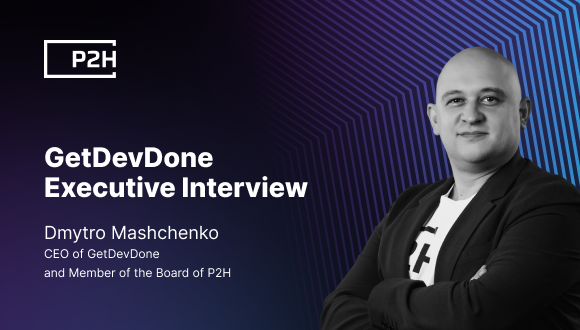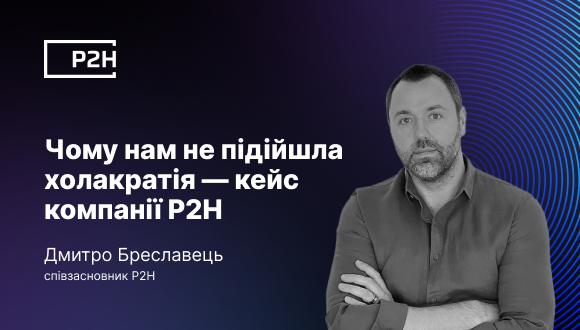
It was 2005. Dmitriy Kucher and Dmitriy Breslavets opened an office in the basement of an internet cafe in Kharkiv, Ukraine. Renting the premises and even the computers, their company, P2H, made its mark with the launch of PSD2HTML.com – a groundbreaking service that offered a fixed-rate, Photoshop to HTML conversion solution. This unique approach quickly gained traction, attracting many clients and propelling P2H to the forefront of the industry 16 years before the advent of generative AI website development platforms.
Subsequently, the founders decided to divide the areas of responsibility. As Chief Product Officer, Breslavets took on the role of overseeing product development and R&D. He also oversees the company’s management framework, which adapts OKR and MBO methodologies. At the same time, Kucher leads business growth and strategic development as the company’s Chief Business Development Officer, focusing on data-driven decision-making. He is also in charge of the company’s Business Intelligence processes.
“For decision-makers, we were the first to make it easy to take a design and turn it into a website,” Breslavets said. “Instead of building a team, hiring talent, endless meetings, and all the costs of project management, they could fill in a straightforward order form and receive an end product, quickly, that was good looking and effective.”
Fast growth brings its challenges
Now headquartered in San Francisco, the success of PSD2HTML.com (recently rebranded as GetDevDone.com) marked the first significant milestone for P2H.
The company tapped into a promising market niche by providing a fast, reliable service for converting designs into pixel-perfect HTML code. Clients could place their orders in the evening and wake up to the completed project the following day, providing unparalleled convenience and efficiency at the time. The overwhelming response from clients motivated Kucher and Breslavets to expand their business further.
With success, P2H faced increasing orders. The founders realised they needed to take decisive action to meet demand. In 2007, they introduced a comprehensive training program to cultivate a skilled workforce capable of handling projects. This initiative significantly reduced the training time for junior developers.
In the beginning, P2H operated based on an assembly line structure, which served them well in the early stages of development. However, recognizing the need for organisational evolution, the founders transitioned to an Agile approach as the hierarchical “assembly line” structure struggled to cope with the growing complexity of projects.
This move empowered its team, allowing them to excel while maintaining transparent communication channels. The transition also marked a personal transformation for the founders, who developed a deeper appreciation for their colleagues and their contributions to the company’s success.
Today, with over 100,000 clients from around the world and a team of more than 500 unique specialists, P2H has established an impeccable reputation in the industry.
“This is something that opened numerous doors to opportunities way beyond simple projects” – Kucher said.
Looking beyond the solopreneur, startup, and small business
One of P2H’s notable achievements is its involvement in digitizing public services in Saudi Arabia as part of the Vision 2030 program, positioning it as a trusted partner in developing cutting-edge solutions for dozens of digital public services. P2H’s successful track record led to its expansion into the Middle East, where they aim to leverage their experience serving clients from the region.
“We focused our efforts on switching from straightforward website projects to complex systems,” Breslavets said. “We built trust in small projects and proved we could solve complex projects with the same level of experience for our clients.”
P2H’s success in Saudi Arabia further broadened its horizons. The unique challenges posed by working in the Middle East region market allowed the company to expand its knowledge and expertise.
“Importantly, our dedication to understanding local culture and traditions positioned us for future regional growth,” Breslavets said. “It is simply not enough to enter a new market. You need to put in the work to understand it if you want to succeed fully.”
It’s not about generative AI; it’s about the client
Despite the rise of generative AI in web development, P2H remains competitive by focusing on clients who value human expertise.
“Even in a world driven by automation, there is still a need for highly professional teams capable of designing and developing tailored solutions,” Kucher said.
In 2023, when it is possible to build websites entirely using generative AI, it is not unreasonable to question how a company like P2H will survive. However, just as the business persevered through rapid growth, it has found a way to thrive where others struggle.
The answer? To focus its attention on those with legacy systems that can’t easily use AI tools, which have become a stalwart of the fast-paced world of startups.
“Governments, for example, can’t move as fast as businesses,” Breslavets said. “They have systems that were built decades ago, in some cases, and either need to rebuild or build from the ground up.”
Some exceptions exist, with smaller countries using technology to play on the world stage, such as Estonia with its e-Residency program. Some other countries, such as those in the MENA region, have a long way to go before they achieve digitalization, and this is where P2H can help significantly.
“While we see a future where you can type a prompt or talk to a platform and it will build a functional, good-looking website for you, complex systems, sites that need to connect with legacy technology, and clients that usually require multiple levels of approval before building a new or updated web presence will need services like ours for some time, so we have the forethought to predict market needs and offer the best solutions for our customers” Breslavets said.


